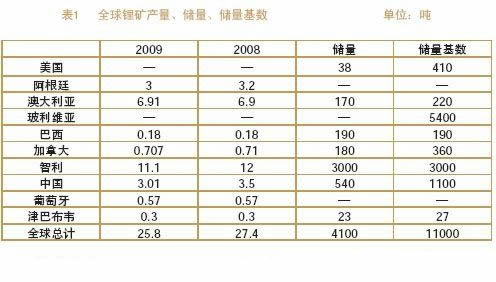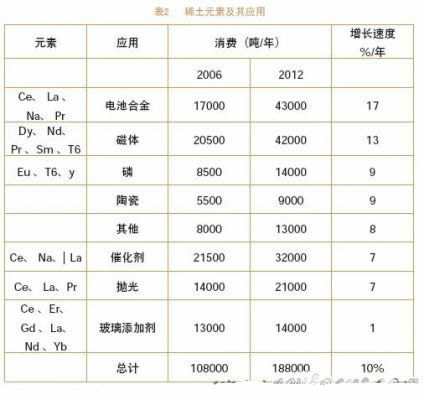Electric vehicle power battery recycling challenge
In the next decade, there will be major changes in the habits of car transportation around the world, electric vehicles will be widely accepted, and the number of discarded batteries will also increase significantly. In the future, the battery recycling chain will be developed strongly, but it has not received sufficient attention from relevant parties.
This article refers to the address: http://
There are predictions that the average life of batteries used in electric vehicles in the future is eight years. Although all major automakers currently have their concept electric vehicle models, the first generation of truly electric vehicles will not be put on the market until 2012. Therefore, the batteries used in the first generation of electric vehicles will not impact the battery recycling industry by 2020. Experts believe that electric vehicles will be fully accepted by the public during the year.
According to PricewaterhouseCoopers (PWC), a world-renowned professional organization, by 2020, 5% of the cars manufactured worldwide will be electric vehicles. What's more, Carlos Ghson, CEO of Renault-Nissan, France, believes that the number of electric vehicles manufactured globally will reach about 10% in 2020, but the arrow of electric vehicle development has been wounded and cannot be stopped.
The Dutch government is encouraging the development of electric vehicles, and hopes that the country is at the forefront of the development of electric vehicles, but there is no systematic idea about the recovery of car batteries. In this article, we will focus on issues such as the disassembly, collection, availability, battery type, and recycling process technologies for electric vehicle materials.
Electric vehicles are the future direction of the car. The right battery demand is now increasing rapidly. Following lead batteries, Ni-Cd batteries and NiH batteries, lithium-ion batteries are considered to be the best choice for modern electric vehicles.
Lithium is widely used in ceramics, glass, and pharmaceutical industries. In recent years, the field of application of lithium has expanded rapidly. It has a high electrochemical potential, so lithium is also an ideal material for heat exchange and is suitable for modern batteries. Rechargeable lithium batteries have been used in 60% of mobile phones and 90% of notebook computers. Lithium is required in both cathode materials and battery electrolytes, and the increase in demand for lithium is mainly due to the increasing number of electric vehicles. Currently, lithium used by battery manufacturers accounts for 20% of global lithium production.
Two-thirds of the world's lithium reserves are at the top of the “lithium triangle†– the surface of the salt desert, with a smaller amount of lithium in Chile and Portugal. Regarding lithium extraction, the focus is to find out whether lithium in underground brine can be used to produce batteries. Chile is the largest producer of lithium carbonate (at the Salar De Atacama salt mine), while Bolivia has the largest reserves (see Table 1).

According to the US Geological Survey's research data: the global lithium reserves are 11 million tons. By comparison, the lithium production in 2008 reached 27,400 tons, while the annual extraction of lithium carbonate and lithium oxide was about 80,000 tons, equivalent to 15,000 tons of lithium metal. Lithium metal comes from the spodumene ore (the spodumene is mainly used in the ceramic industry because of its glass-like structure, which is not suitable for batteries).
The kilowatt hour capacity requires 0.79 kg of lithium carbonate (0.15 kg lithium), while the plug-in hybrid vehicle (PHEV) battery has an average of 20 kWh of energy. If global car sales reach 70 million vehicles in 2020, 5% of which are for electric vehicles or composite electric vehicles, the additional demand exceeds 55,000 tons of lithium carbonate, which has exceeded the global consumption in 2010.
Because of the increase in demand, lithium prices will continue to rise, so lithium mines that are difficult to extract also have economic benefits. Bolivia is already planning to build a lithium plant with an annual capacity of 30,000 tons, which may have greater production potential. According to the existing reserves, unless the number of electric vehicles increases explosively, the production of lithium will guarantee the demand of the future automotive industry, which is expected to be used for the next 200 years.
Lithium is not the only "new" element. It is only one component of electric vehicle lithium-ion batteries. Other components are rare earth elements, which are also used in applications such as magnets, electronics, solar cells, wind pulleys and catalysts (see Table 2).

In the past 10 years, the global consumption of rare earth elements has increased by more than three times to nearly 125,000 tons.
At present, battery collection is still a problem that has not received enough attention. Since car batteries suffer from low value or negative value, batteries are usually removed at car disassembly companies, often with very heavy battery integration (up to 200 kg), which is a real problem. Car companies have to accept training on how to safely disassemble batteries, and auto repair shops, garages, and fire service departments will have to undergo training on how to respond safely to car battery replacement, damage, and accidents.
If the average life of the battery is assumed to be 8 years, it seems that the service life of the car should be longer than the battery life. This will have other important problems. Who will replace the battery that has not reached the service life of the electric car? More importantly, what should I do with the old battery?
Until now, no one has noticed the main role of the recovery chain in the future. For example, the above-mentioned raw material consumption does not take into account the reuse and recycling of batteries. Various technologies are being developed, such as hydrometallurgical process technology, to melt metals in a molten pool to recover them. It is true that the most suitable recycling technology at present is pyrometallurgical smelting technology. The heavier metal settles to the bottom of the molten pool, while other oxides, slag, float on the top, and lithium remains as lithium oxide in the slag. Can no longer be used to make processed batteries, but slag can be used to build roads.
In fact, the recovery of lithium-ion batteries is not primarily for the recovery of lithium, but for the recovery of copper, aluminum, nickel and cobalt. Other metal trends are the replacement of high-priced metals such as cobalt and nickel with manganese and iron phosphate, combined with lower metal yields in the smelting process. The overall recycling process costs are quite high, estimated at 2 to 3 euros per kilogram. The recycling cost of a battery can easily reach 200 euros. In addition to practical and technical issues, funding issues have also hampered the rise of the battery recycling industry. More specifically, who is paying for the cost of disassembly, collection, and disposal of electric vehicle batteries.
At present, research on the recycling of electric vehicles has been fully carried out. ARN Advisory, a subsidiary of the Dutch Automobile Recycling Association ARN, is closely monitoring the development of this field. In the current transition period, diesel and hybrid vehicles with effective fuels can still achieve significant increases in efficiency. At the same time, there is still a question as to whether lithium-ion batteries will be used in the future. Because the safety of lithium-ion batteries is still in dispute, and some materials are not fully recovered.
The Dutch Automobile Recycling Association is conducting a comprehensive study to better understand the disassembly issues and the raw material composition of composite electric vehicle batteries. The composition and quantity of batteries largely determine the cost of recycling, which is what the research team is doing every day.
The birth of new technology may make lithium ions not the main driving force of electric vehicles in the future. For example, silicon air batteries are made of very common raw materials, and the oxygen used is obtained from the air, so it not only makes the battery lighter but also Another big advantage is that recycling this battery is no longer a problem, silica sand is very rich, and no hazardous materials are produced when the battery is scrapped. Lithium-ion batteries are just one option and not the only solution for electric vehicles.
A manual pulse generator (MPG) is a device normally associated with computer numerically controlled machinery or other devices involved in positioning. It usually consists of a rotating knob that generates electrical pulses that are sent to an equipment controller. The controller will then move the piece of equipment a predetermined distance for each pulse.
The CNC handheld controller MPG Pendant with x1, x10, x100 selectable. It is equipped with our popular machined MPG unit, 4,5,6 axis and scale selector, emergency stop and reset button.
Manual Pulse Generator,Handwheel MPG CNC,Electric Pulse Generator,Signal Pulse Generator
Jilin Lander Intelligent Technology Co., Ltd , https://www.jilinlandermotor.com